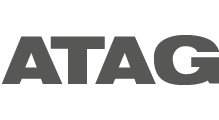In a highly competitive market such as kitchen appliances, manufacturers are doing their very best to try and differentiate themselves from the competition, often doing so by adding more and more features to their products. But this usually results in overly complex and difficult to understand products. Could we create a more desirable oven by better understanding how people cook and what their needs are in the kitchen?
As the design lead for this project, it was my responsibility to organize and carry out research activities and to spearhead the design of the user experience together with another two designers (UX & Visual). The project was started with an initial analysis and benchmarking of competing products as well as products from different but comparable categories (such as washing machines) in search of inspiration. To this end, I visited many, many electronics stores and even went to the IFA in Berlin.
To better understand the cooking habits of potential customers, I performed a qualitative research by visiting the homes of different people fitting the profile that Atag was targeting. I observed and documented, as they cooked dinner and carried out interviews afterwards to get a better understanding of what motivated them and why they did things the way they did.
It was also important to know what factors were relevant for people when choosing a new oven and if they understood the features and functions available to them. We therefore invited a group of people to a focus group, where we asked them about their cooking habits and did a couple of exercises to gather insights. The session was live streamed to the stakeholders so that they could peek into the process, discuss it, and ask questions through the facilitators without being disruptive.
The collected data was analyzed to identify the relevant user insights that could influence the success of the product. These factors were grouped into themes and used as a reference throughout the rest of the project. I also identified three distinct profiles, defined by particular use characteristics and motivations, that described the type of use that our product should be able to facilitate.
Our first step of the ideation and conceptualization phase was to define the general information architecture of the user interface. For this, I organized a couple of brainstorm sessions together with the stakeholders. We made an inventory of features and translated them into initial flowcharts of the expected oven functions. All of this was used in turn to start hand sketching quick solutions. This is an excellent way to explore as many ideas as possible without getting too attached to them.
As ideas matured further, I created a full set of wireframes for all the necessary screens. This allowed me to make sure that the different screens worked together into a cohesive experience and that we were not missing any use cases. Up to this point we kept designs on a low visual fidelity, so that we could focus on how things work, without being distracted by how they look.
We created a high fidelity interactive prototype and ran it on a tablet rigged to the front of an oven. By doing this, we were able to simulate a common kitchen situation in which different users were invited to perform a series of oven related tasks. The sessions were recorded for further analysis of the UI’s usability. Stakeholders were able to follow the whole activity in real time from a different room by using a low-cost setup of online conferencing tools, allowing them to communicate with the session facilitators for further questions and comments without interrupting the test.
Further improvements were made based on the findings from our tests. The final design is heavily based on insights from our research, taking into consideration the 3 types of profiles we identified: The “Busy mom” (Quick, convenient, no hassle), the “Hobby cook” (Learning, experimenting) and the “Top Chef” (Control, details). It caters to them by bringing the most commonly used features to the forefront of the UI for everyday use, encouraging exploration by smartly giving tips of more advanced features, and allowing experienced users to tweak settings individually when desired.
The product won prestigious design awards, but more importantly, it was well received by consumers. Our approach helped ATAG embrace user-centered design as their preferred methodology for future product development, and the project was presented at various conferences as an example of how positive results can be achieved by involving users in the development process, without necessarily incurring in very high costs.




